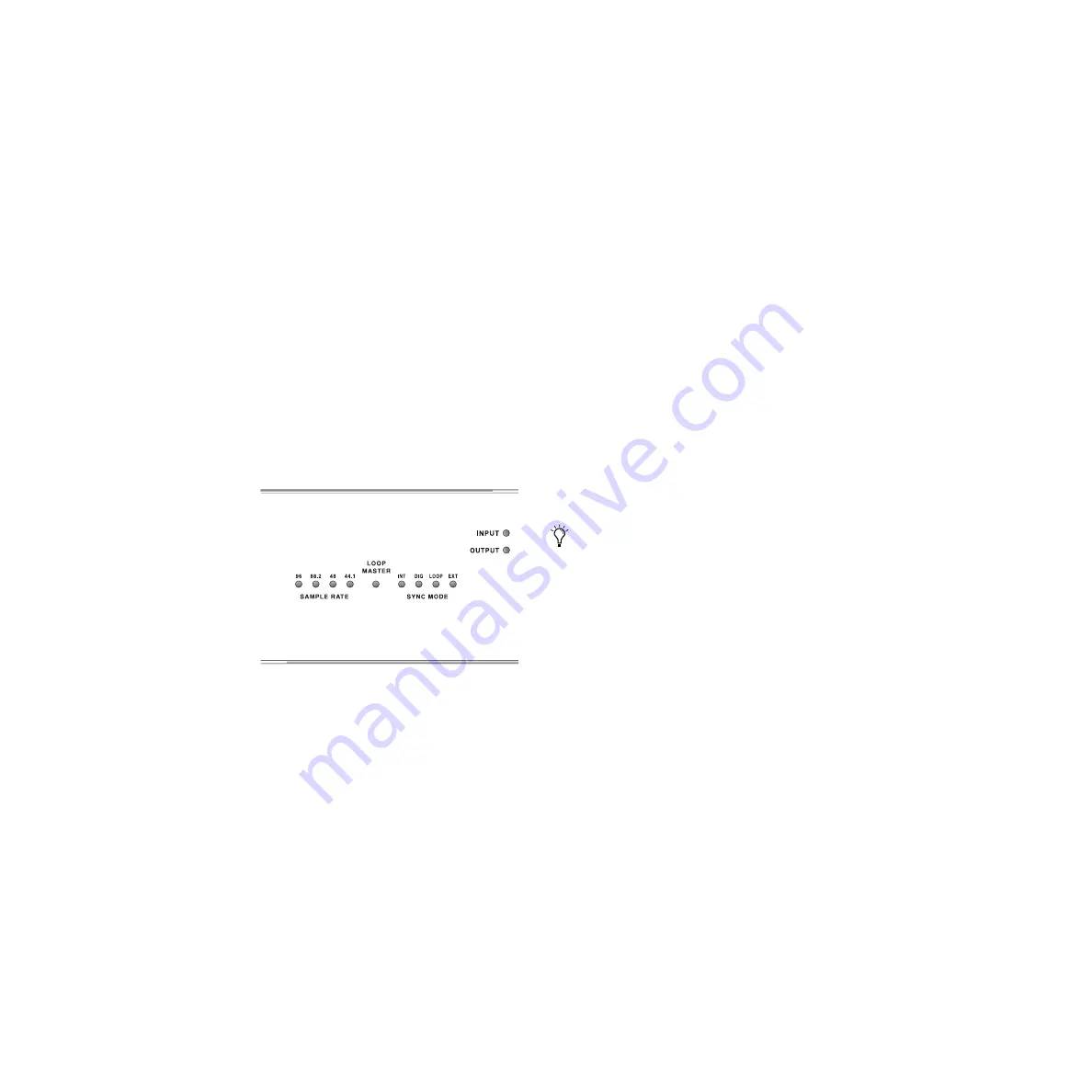
96 I/O Guide
20
clock signals connected to the External Clock In
port), and other choices as appropriate for the
currently enabled Digital Format and sample
rate.
Pro Tools will remember your configuration un-
til you change it. If you want to change your
Pro Tools hardware configuration in the future,
you can access these parameters again in the
Hardware Setup dialog.
You will be able to select the sample rate each
time you create a new session.
SYNC MODE Indicators
The SYNC MODE LEDs indicate the current
clock source.
INT (Internal)
This is the 96 I/O standard clock
setting. In this mode, the 96 I/O sample clock is
generated by its internal crystal oscillator, as de-
termined by the session Sample Rate.
DIG (Digital)
This setting indicates that an exter-
nal AES/EBU, Optical (ADAT), or S/PDIF device
is providing system clock. If you wish to use an
AES/EBU or S/PDIF device as Clock Source, you
will have to select the corresponding Digital In-
put format. If no valid clock source is detected,
96 I/O will switch to INT, the DIG LED will
flash, and an error message will appear on-
screen in Pro Tools.
To record from an AES/EBU source, select
AES/EBU for Digital Format, and make sure it’s
not selected in Clock Source.
To connect digitally with other digital devices
that are functioning as more than an input de-
vice (such as when sending and returning sig-
nals to and from an external digital signal pro-
cessing device) be sure to set the external digital
device to external clock. This will allow the ex-
ternal digital device to clock off the digital out-
put port you are using on the 96 I/O.
The 96 I/O can function in this way while in In-
ternal clock mode, and can use a third device as
Clock Source.
If at least two channels are not assigned from
the selected digital port in the Main page of the
Hardware Setup dialog, or if no valid clock
source is detected at this port, 96 I/O will switch
to INT and the DIG LED will flash.
LOOP (Loop Master)
This LOOP LED indicates
that the 96 I/O is slaving to another HD I/O
through Loop Sync. You do not set LOOP mode
anywhere in the software. This is done automat-
ically when you choose another I/O as LOOP
MASTER by selecting its Clock Source.
Front panel synchronization mode setting LEDs
You will not be able to use the Optical
(ADAT) port as an eight-channel synchroni-
zation source if the radio button for Optical
S/PDIF is selected. Likewise, you must first
select the radio button for Optical S/PDIF in
the Digital Format section if you want to use
the Optical (ADAT) port to synchronize to re-
ceive Optical S/PDIF (also known as TOS-
Link, it supports sampling rates up to
96 kHz).










































